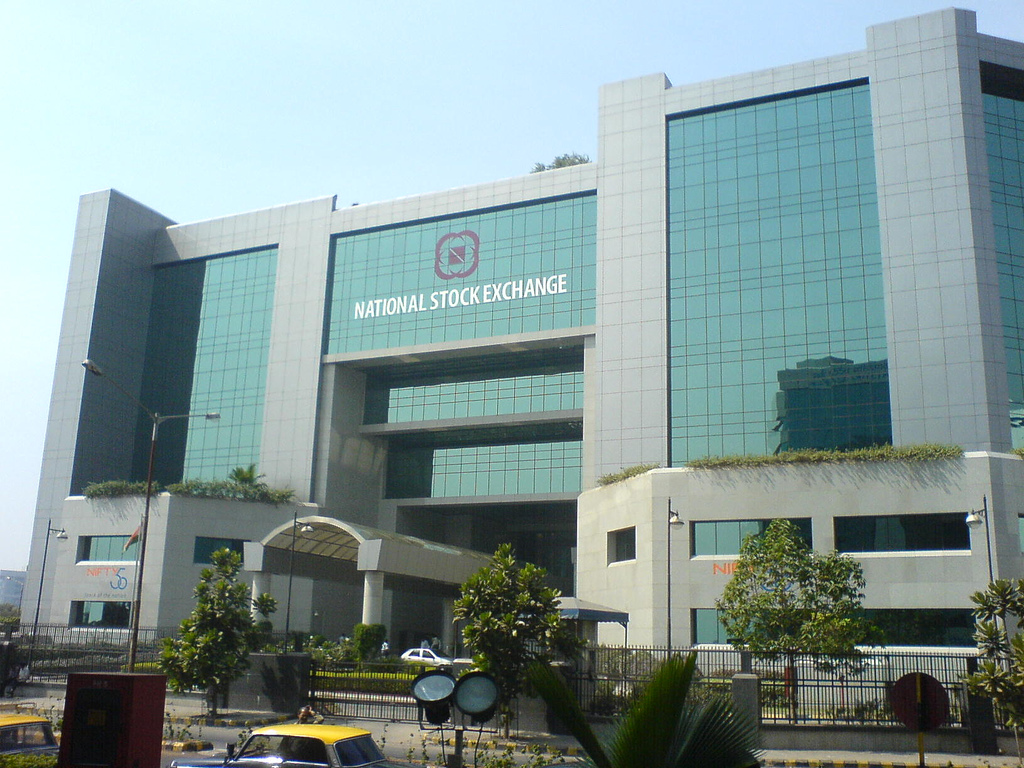NSE India: (एनएसई इंडिया) is one of the most dynamic and trusted stock exchanges in the world, symbolizing India’s financial strength and modernization.
📑 Table of Contents (विषय सूची) of NSE India:
-
Introduction (परिचय)
-
History of NSE India (एनएसई भारत का इतिहास)
-
Structure of NSE (एनएसई की संरचना)
-
Trading Segments in NSE (एनएसई में ट्रेडिंग सेगमेंट्स)
-
Key Indices of NSE (एनएसई के प्रमुख सूचकांक)
-
Technology in NSE (एनएसई में तकनीक का महत्व)
-
NSE vs BSE (एनएसई बनाम बीएसई)
-
Economic Impact of NSE (एनएसई का आर्थिक प्रभाव)
-
Role of SEBI in NSE (एनएसई में सेबी की भूमिका)
-
Global Recognition (वैश्विक पहचान)
-
Recent Developments in NSE (एनएसई में हाल के विकास)
-
Future of NSE (एनएसई का भविष्य)
-
FAQs (सामान्य प्रश्न)
-
Conclusion (निष्कर्ष)

🎓Introduction (परिचय) of NSE India:
NSE India (National Stock Exchange of India) भारत का सबसे बड़ा और सबसे modern stock exchange है। यह 1992 में स्थापित हुआ और 1994 से electronic trading platform प्रदान कर रहा है। इसका उद्देश्य भारतीय investors को transparent, efficient और technology-driven market उपलब्ध कराना था। आज NSE global ranking में top exchanges में शामिल है।
🎓History of NSE India (एनएसई भारत का इतिहास)
-
1992 में NSE की स्थापना हुई।
-
1993 में SEBI ने इसे recognition दिया।
-
1994 में यह पहला exchange बना जिसने dematerialized electronic trading system शुरू किया।
-
1996 में NSE ने NIFTY 50 index launch किया।
-
आज NSE derivatives और equity market में global leader बन चुका है।
🎓 Structure of NSE India: (एनएसई की संरचना)
Shareholding Pattern (शेयरहोल्डिंग पैटर्न)
NSE के shareholders में banks, insurance companies, financial institutions, और domestic/foreign investors शामिल हैं।
Market Segments (मार्केट सेगमेंट्स)
NSE के अलग-अलग segments हैं:
-
Equity Market
-
Futures & Options
-
Currency Market
-
Debt Market
🎓 Trading Segments in NSE (एनएसई में ट्रेडिंग सेगमेंट्स)
Equity Market (इक्विटी मार्केट)
Investors यहाँ shares, ETFs और mutual funds में trade कर सकते हैं।
Derivatives Market (डेरिवेटिव्स मार्केट)
NSE derivatives segment में index futures, stock futures, options contracts provide करता है।
Currency & Debt Market (मुद्रा और ऋण बाजार)
Currency derivatives allow trading in USD, EUR, GBP, JPY, जबकि debt market bonds और government securities प्रदान करता है।
🎓 Key Indices of NSE (एनएसई के प्रमुख सूचकांक)
NIFTY 50 (निफ्टी 50)
-
NSE का सबसे popular index।
-
इसमें 50 top companies शामिल हैं जो भारतीय economy का प्रतिनिधित्व करती हैं।
Sectoral Indices (क्षेत्रीय सूचकांक)
-
NIFTY Bank
-
NIFTY IT
-
NIFTY Pharma
-
NIFTY FMCG
ये indices specific sectors की growth और performance दिखाते हैं।
🎓 Technology in NSE (एनएसई में तकनीक का महत्व)
Online Trading (ऑनलाइन ट्रेडिंग)
NSE ने India में electronic order matching system शुरू किया, जिससे transparency बढ़ी और brokers की dependency कम हुई।
Algo & High-Frequency Trading (एल्गो और हाई-फ्रिक्वेंसी ट्रेडिंग)
आज NSE advanced algorithms और automated trading systems support करता है जिससे बड़े investors और institutions fast trading कर सकते हैं।
🔖NSE vs BSE (एनएसई बनाम बीएसई)
| Feature (विशेषता) | NSE | BSE |
|---|---|---|
| Founded (स्थापना) | 1992 | 1875 |
| Main Index (मुख्य सूचकांक) | NIFTY 50 | SENSEX |
| Technology (तकनीक) | Advanced electronic trading | Oldest, later modernized |
| Market Share (बाजार हिस्सेदारी) | Higher | Moderate |
🎓Economic Impact of NSE (एनएसई का आर्थिक प्रभाव)
Contribution to Indian Economy (भारतीय अर्थव्यवस्था में योगदान)
-
NSE capital market को accessible बनाकर foreign investments लाता है।
-
यह SMEs और startups को capital raising का मौका देता है।
Employment & Startups (रोज़गार और स्टार्टअप्स)
-
NSE ecosystem लाखों लोगों को direct और indirect jobs देता है।
-
India के fintech और startup ecosystem को NSE ने मजबूत किया है।
🎓 Role of SEBI in NSE India: (एनएसई में सेबी की भूमिका)
SEBI (Securities and Exchange Board of India) NSE को regulate करता है ताकि fair trading, investor protection और transparency बनी रहे।
🎓 Global Recognition (वैश्विक पहचान)
NSE दुनिया के top 10 stock exchanges में आता है। इसका derivatives segment global leaders में गिना जाता है।
🎓 Recent Developments in NSE India: (एनएसई में हाल के विकास)
-
Digital KYC और e-voting platforms शुरू हुए।
-
Retail participation बढ़ाने के लिए नए products launch हुए।
-
Blockchain और AI integration पर काम जारी है।
🎓 Future of NSE India: (एनएसई का भविष्य)
-
NSE का लक्ष्य है कि India को global financial hub बनाया जाए।
-
Fintech, AI, और blockchain technologies NSE के future को shape करेंगी।
-
More global investors India की ओर आकर्षित होंगे।
🔖 FAQs (सामान्य प्रश्न) of NSE India:
Q1. NSE India कब स्थापित हुआ था?
👉 1992 में।
Q2. NSE का मुख्य सूचकांक कौन सा है?
👉 NIFTY 50।
Q3. NSE और BSE में बड़ा कौन है?
👉 NSE trading volume और technology के मामले में बड़ा है।
Q4. क्या foreign investors NSE में निवेश कर सकते हैं?
👉 हाँ, NSE global investors के लिए खुला है।
Q5. NSE का भारतीय अर्थव्यवस्था पर क्या प्रभाव है?
👉 यह निवेश, रोज़गार और startups को बढ़ावा देता है।
🔖 Conclusion (निष्कर्ष) of NSE India:
NSE India (एनएसई इंडिया) ने भारतीय निवेश और आर्थिक व्यवस्था को एक नई पहचान दी है। यह न सिर्फ technology-driven platform है, बल्कि यह India’s financial backbone भी है। आने वाले समय में NSE India को global finance में और भी ऊँचा स्थान दिलाने में अहम भूमिका निभाएगा।
For more information check this :
also visit this : https://sampurnjankari.com/

